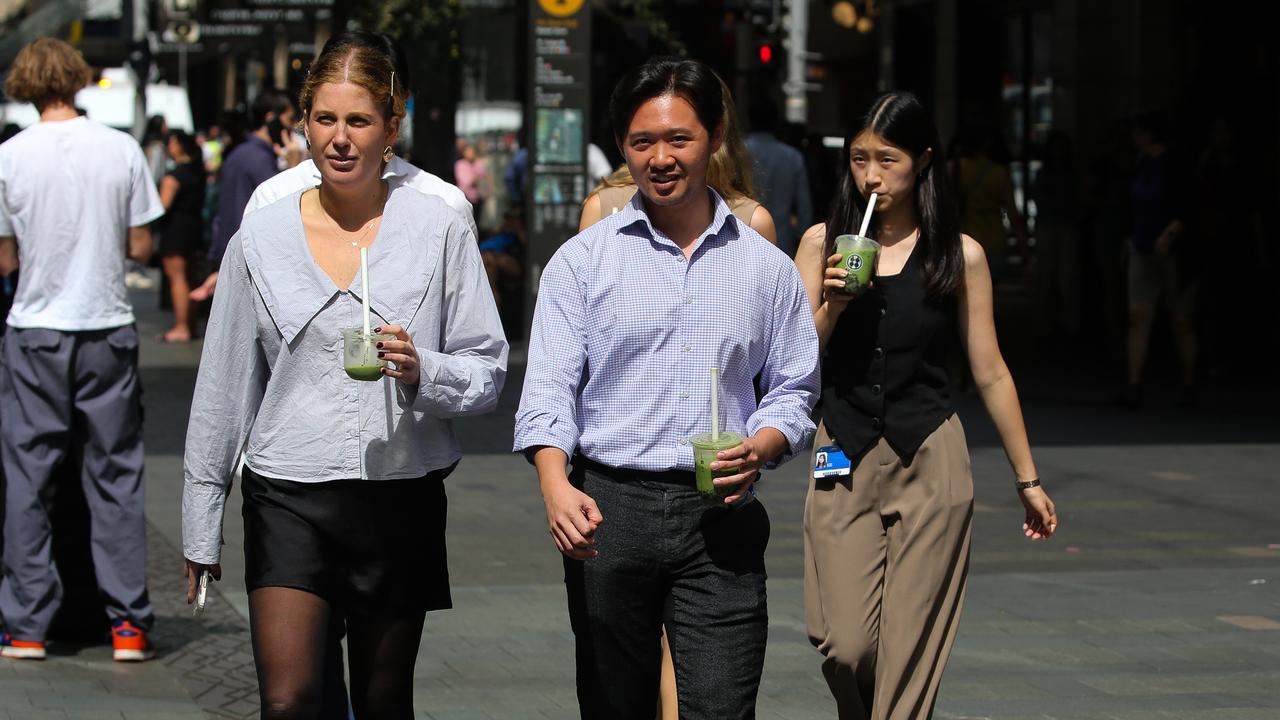Liberal women an ‘endangered species’ after yet another exit, hurting ScoMo’s chances
The exit of yet another woman from the Liberal Party was a blow for Scott Morrison. But it could get a lot worse for the Prime Minister.
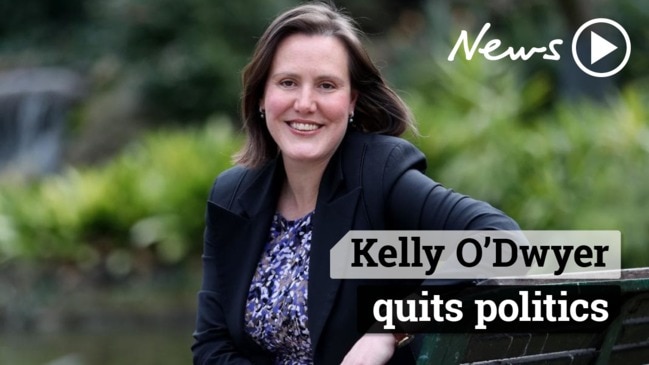
The continuing exodus of women from the Liberal Party’s ranks could see it left with fewer than six female parliamentarians after the next election, experts predict.
Kelly O’Dwyer dropped a bomb on Scott Morrison’s government on Saturday when she announced her exit from politics to spend more time with her family.
The cabinet minister and member for Higgins is the latest loss of a Coalition female and significantly adds to Mr Morrison’s perceived “women problem”.
Veteran political commentator Michelle Grattan, a fellow at the University of Canberra, said the Liberals are presenting “a very poor face to women voters”.
“If the Liberals didn’t have their acute ‘women problem’, O’Dwyer’s jumping ship wouldn’t be such a concern,” Ms Grattan wrote today in The Conversation.
“But it’s altogether another matter to have your minister for women bailing out when there has been a huge argument about the dearth of females in Coalition ranks, damaging allegations of bullying within the Liberal party, and high profile Victorian backbencher Julia Banks deserting to the crossbench.”
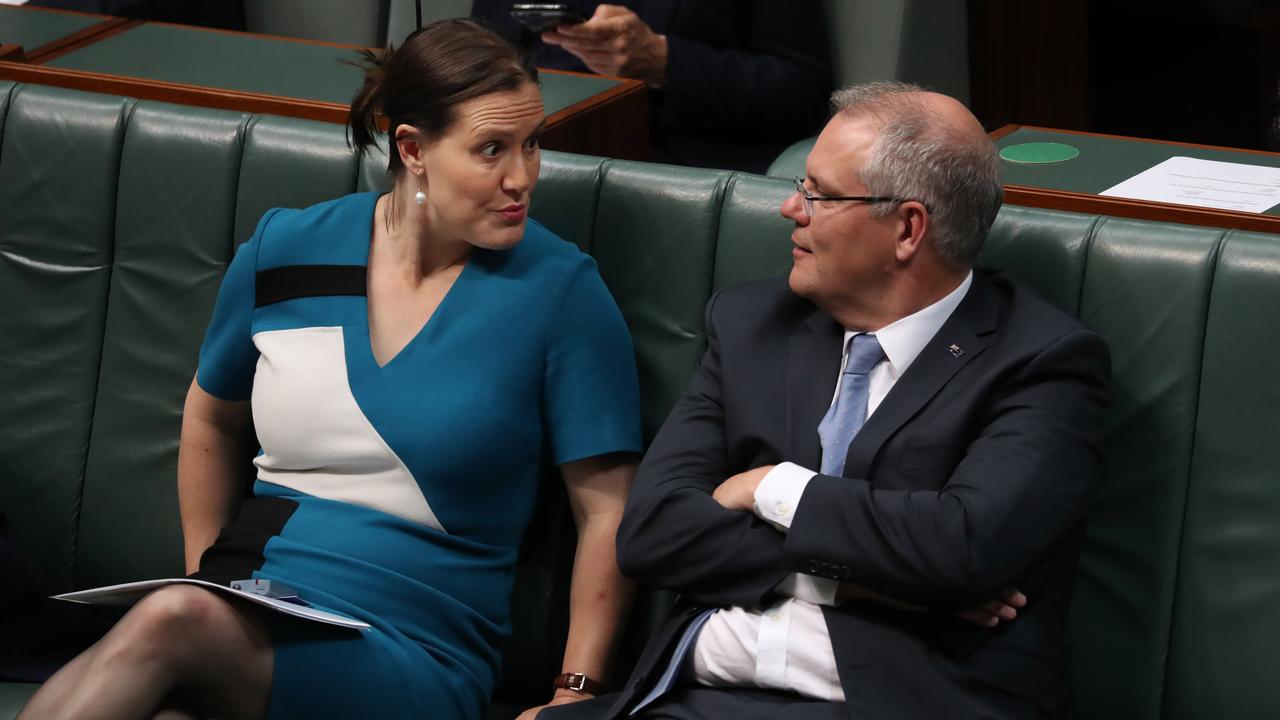
In the lead-up to the election, which successive opinion polls show the government will struggle to win, Mr Morrison can’t afford to drive voters away.
Political writer Paula Matthewson, who has penned the forthcoming book On Merit about women in the Liberal Party, believes other female conservatives will pull the pin.
“I do suspect Julie Bishop will go, but I don’t know when,” Ms Matthewson said. “My understanding is that the timing is all about keeping a man out of her seat.”
What is the government’s “women problem” and how does it hurt its electoral prospects?
‘AN ENDANGERED SPECIES’
The Coalition has pushed back against calls for quotas, arguing that it selects candidates based on merit and not gender.
It’s a suggestion that many — including those within the party — have openly laughed at.
“I think there’s finally an awareness that if someone of such merit as Julie Bishop can’t succeed and be taken seriously by her party, then there’s no hope for any other woman,” Ms Matthewson said.
A quiet group of Liberal women, dubbed the “red shoe brigade”, is driving a “new awakening” in parliament when it comes to female representation, she said.
“They realise they need to do something. Perhaps they need to look at what else they could do — including quotas in the short-term. The status quo will mean the end of Liberal women.”
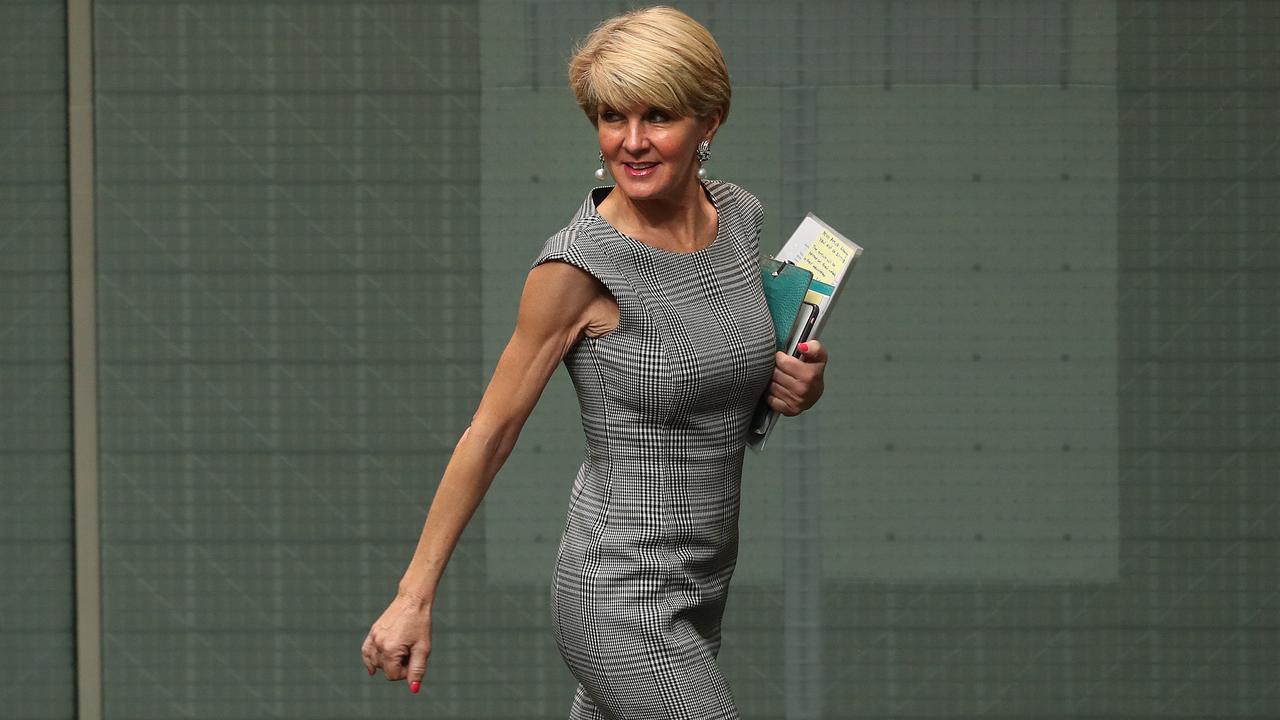
Under the then Liberal leader John Hewson, a number of initiatives were launched in the early 1990s to encourage female representative in the party.
Among them was the Liberal Women’s Forum, which aimed to promote the notion of running for public office.
Australian National University professor of politics Marian Sawer said there was a surge of Liberal women into parliament in the 1993 and 1996 elections as a result.
“However, things started going backwards under the Howard government, which was adamant it would not ‘patronise’ women by any kind of affirmative action,” Prof Sawer said.
Now, just one-fifth of Coalition politicians are female, compared to 48 per cent of Labor MPs.
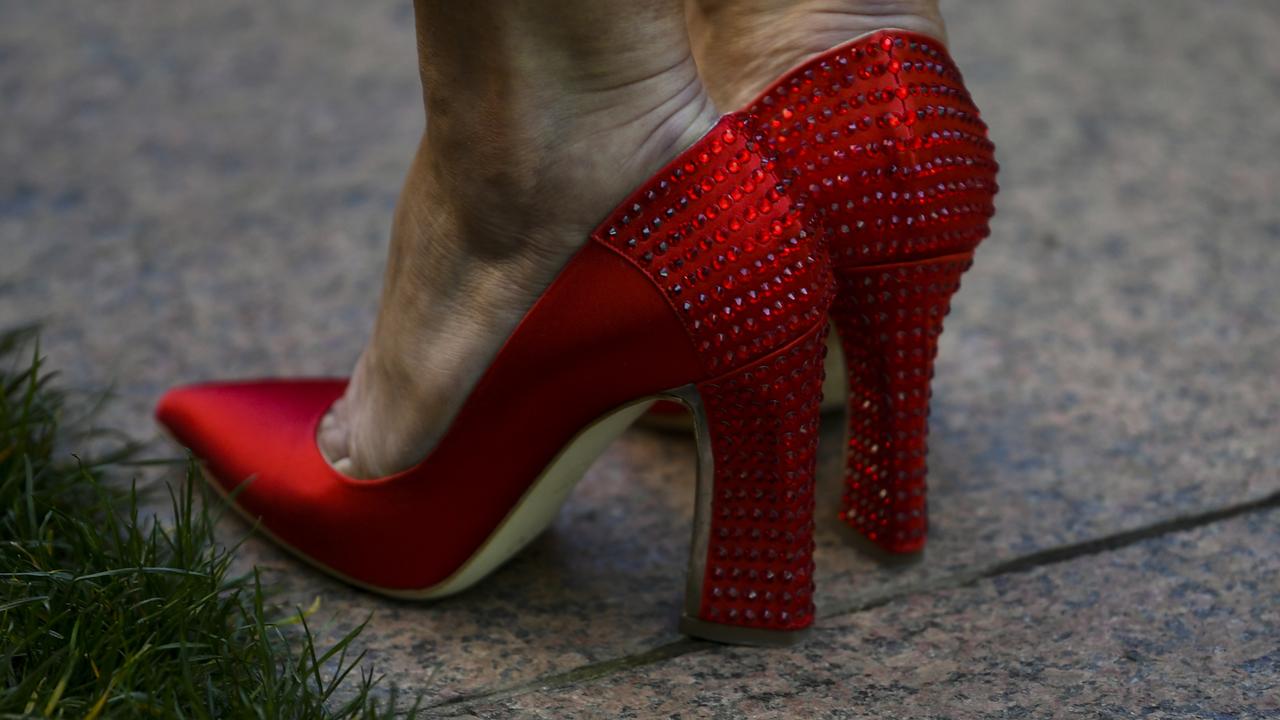
Ms Matthewson said the number of women in the Liberals remained somewhat steady until recently.
“The number of women and the proportion of Liberal women in the parliament hasn’t changed from the Howard yards until recently. It’s always been about 20 in the House of Representatives but it’s now 12,” she said.
“And after the next election, it has the potential to drop to six or perhaps even less.
“We talk about the heyday when a pile of Liberal women were elected in 1993 and 1996. There was an influx. They’ve all gone now.”
A VOTE LOSER
The damage of the government’s “women problem” is far from merely superficial, with Ms Matthewson believing it will “drive voters away”.
“Voters in the general can see that the Liberal Party having almost entirely men is not a good thing. They can see the macho culture that exists — the bullying allegations, Craig Kelly saying women should ‘roll with the punches’ … people don’t response to that.
“Voters want to vote for a party that at least understands their issues,” she said.
“If a party has next to no women — six, as it may have after the next election — it will not be able to understand women and women’s issues.”
Over the past decade, a gender gap has been growing when it comes to Liberal Party voters, Ms Matthewson said.
“Female voters are moving away from voting conservative. There’s a gender gap. More men are voting for the Liberal Party than women and that gap is growing.”
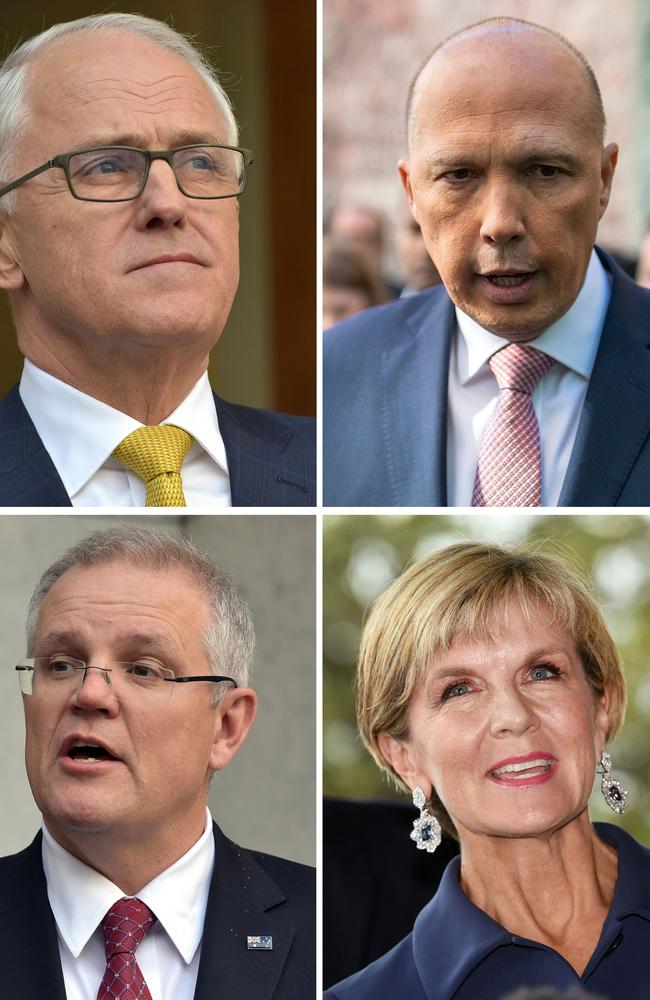
The Liberal Party has been slow to address its female representation issue and ignored the risk it poses, she said.
“Women make up 50.7 per cent of the Australian population, yet just under a third of the federal parliament,” LaTrobe University associate professor of politics Andrea Carson said. “About one in five federal Coalition MPs is female.”
Mr Morrison’s government has failed to shake-off perceived “women problem”, with the PM only increasing the number of female Cabinet ministers by one during his reshuffle.
“This suggests a significant problem for conservative women entering politics,” Associate Professor Carson said.
“The sudden removal of (Julie) Bishop as deputy Liberal leader (also added) damage to the Coalition’s image of having a problem with women.”
For the past 12 months, pundits have discussed the Coalition’s “women problem” after frontbencher Jane Prentice was ousted by a male preselection challenger, and a similar coup saw Ann Sudmalis walk away.
Allegations of vile bullying of Liberal women during the leadership coup last year were hugely damaging and prompted the exit of Julia Banks.
STATEMENT pic.twitter.com/ldScV2nJxu
— Julia Banks MP (@juliabanksmp) August 29, 2018
She announced she would not contest the next election and then quit the Liberal Party altogether to sit on the crossbench as an independent.
Ms Bishop has spoken publicly on numerous occasions about the behaviour of men in Canberra and said much of what she’d witnessed wouldn’t fly in the corporate world.
There is mounting speculation that she too will walk away from politics, said to be disillusioned with her parties increasing conservative shift.
A spokesperson for Ms Bishop told news.com.au that she would run again.
“I am preselected as the member for Curtin and it is my intention to run,” Ms Bishop said in a brief statement.
‘LAUGHABLE’ CLAIMS
In an appearance on ABC Breakfast today, Liberal Senator Jane Hume dismissed suggestions that her party has a “women problem”.
“The Coalition has done more to progress the causes of women in the last five years than, I think, any government in the last 30,” Ms Hume said.
Ms Matthewson said Mr Morrison had brought in a number of moderate women to ministerial and junior ministerial positions, and then promptly “shut them down”.
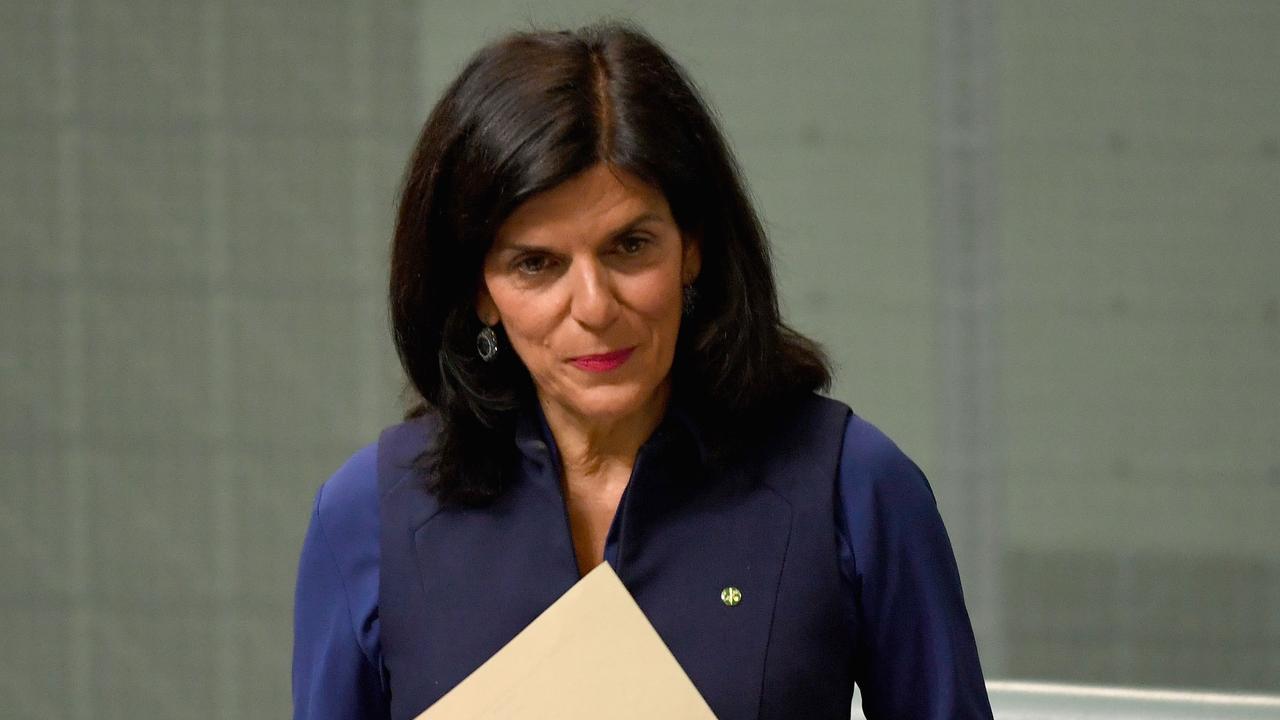
Those who insist the party doesn’t have a women problem “can’t seriously believe it”, she said.
“If you look at the women who are speaking and saying that, have a ministerial or junior ministerial role. They’re being wheeled out basically to sprout the party line. They’re being made to do it — it’s quite clear.
“You can contrast the comments of Jane Hume and Linda Reynolds, who came out as members of the red shoe brigade, prior to the reshuffle, and said the exact opposite. But now they’re bound by principles of ministerial solidarity.
“Metaphorically, their hands are tied. They have to go out and say there’s no problem because that’s what the government has decided they need to say.”
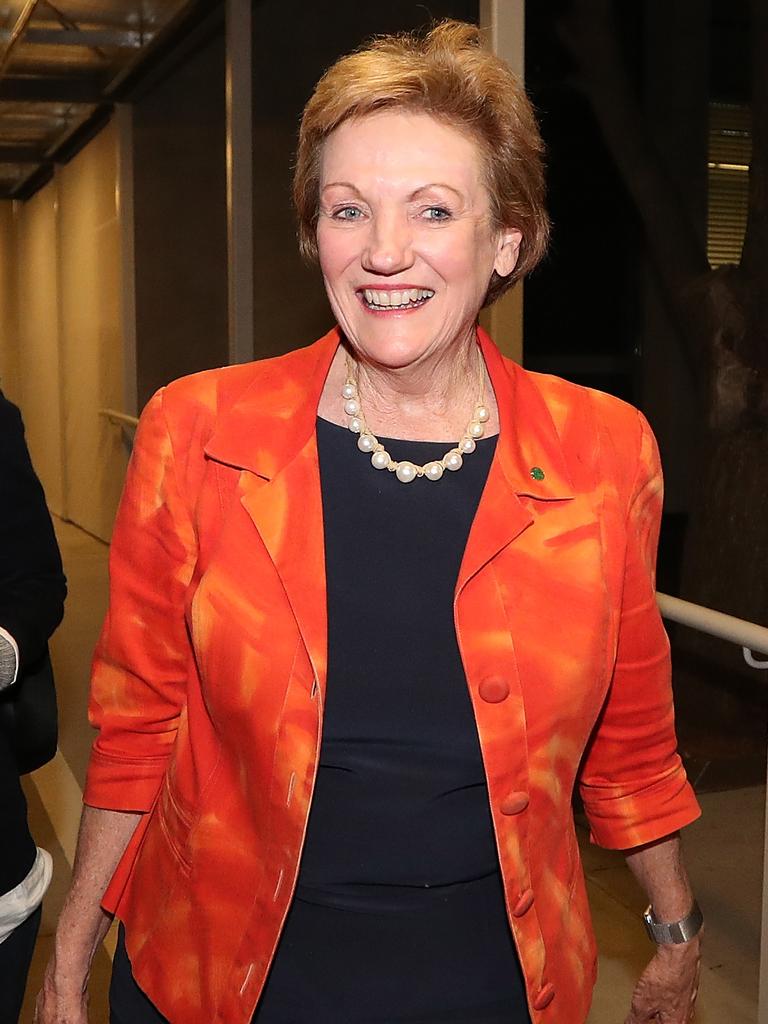
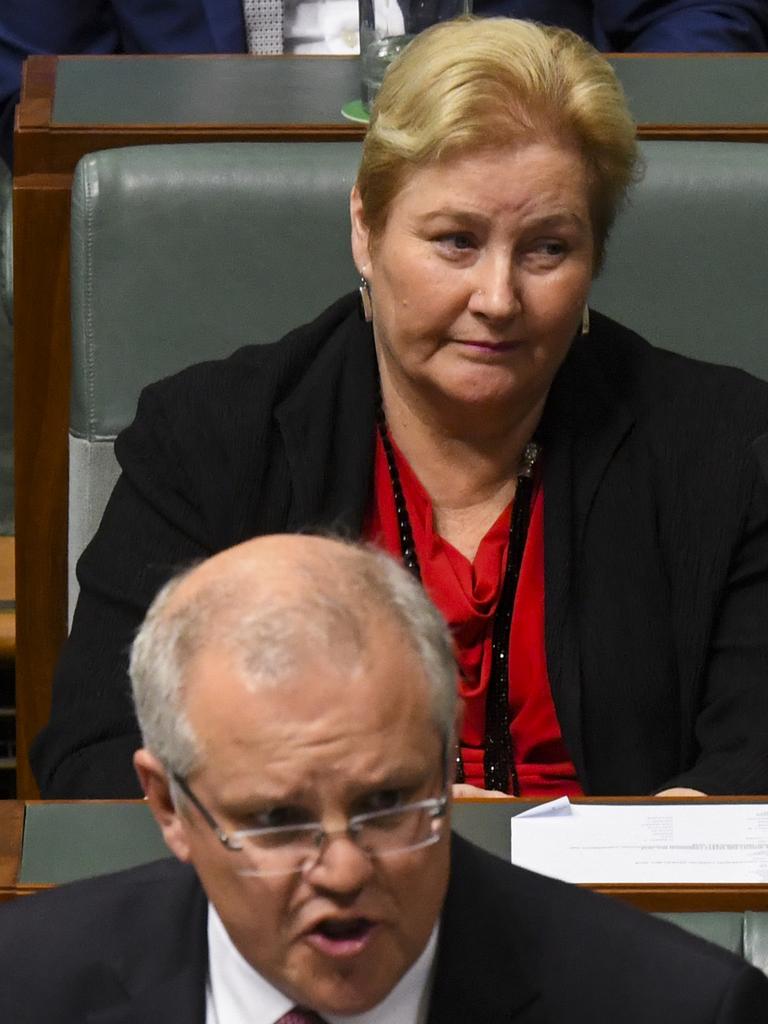
Mr Morrison has indicated he wants to see a female candidate step up in Higgins, the seat vacated by Ms O’Dwyer.
He now faces a serious test in proving his is “fair dinkum, as he says, about female representation”, Ms Matthewson said.
But the Victorian branch of the Liberals is dominated by ultraconservative religious men who “have a tendency to preselect other conservative men”, she said.
And even if their hands were forced and they picked a woman, there are suggestions it would be a fellow conservative such as Peta Credlin, former chief of staff to ex-PM Tony Abbott.
“A conservative woman will not win the seat,” Ms Matthewson said.
TO QUOTA OR NOT?
Labor’s proportion of women in its ranks has increased sharply since it first introduced quotas in the mid-1990s, almost doubling in that time.
It now presents a stark contrast to the Coalition at the next election, Ms Matthewson said.
“Female voters are moving away from voting conservative. There’s a gender gap. More men are voting for the Liberal Party than women and that gap is growing.”
A recent University of Melbourne study found there’s little voter appetite on the conversation side of politics for shifting to set gender quotas.
From a survey of 2100 voting-age Australians last year, most conservative voters did not see being female as an impediment to political success.
“This study suggests the Coalition parties have little incentive to introduce gender quotas when their voters do not see any reason for them,” Associate Professor Carson said.

Around the world, some 100 countries have introduced some form of quota to encourage women to enter political life.
How effective they’ve been differs in each scenario, based in large part on how much of the effort is put down to tokenism — or leaders wanting to be seen as progressive but not using an increase of women.
“Nonetheless, thanks to quotas, the proportion of women in parliaments across the world has nearly doubled in the past 20 years,” Professor Sawer said.
But Professor Sawer said it’s not just a lack of quotas that present a barrier for women who want to enter Australian politics.
“They have been made to feel unwelcome in other ways,” she said.
“When Australia’s new Parliament House was opened in Canberra in 1988 it had a pool, a gym, a snooker room and a meditation room but no childcare centre, despite vigorous campaigning by female senators.
“The campaign lasted for another 20 years before a small childcare centre was finally opened in 2009 — for a workplace in which there are 3500 people in sitting weeks.”



